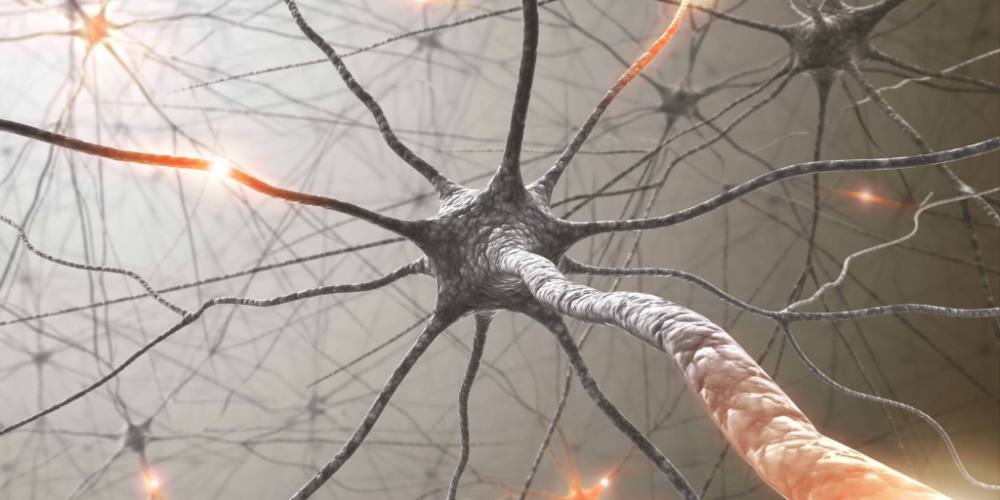
Have you ever wondered if the pain of fibromyalgia might actually be a type of nerve issue, a neuropathy? And if so, could we treat it with the same tools we use for other nerve problems? Today we’re diving into the idea that, for some people, fibromyalgia pain could stem from a condition called small fiber neuropathy.
Most people think of fibromyalgia as something that affects muscles and joints, like a rheumatic condition. But what if, for some of us, the pain is actually coming from our nervous system – the spinal cord, the brain, or even the nerves out in our limbs? We’ll explore how this might happen and focus on a nutrient called agmatine, which has shown some really promising results for this kind of pain. (Based on the expertise of Elliot Overton, a nutritional therapist.)
Key Takeaways
- Fibromyalgia pain may be linked to small fiber neuropathy in some individuals.
- Small fiber neuropathy can cause symptoms like touch sensitivity, burning, numbness, tingling, and chronic aches.
- It can also lead to broader nervous system issues affecting sweating, bladder control, gut function, and heart rhythm.
- Common causes of small fiber neuropathy include diabetes, autoimmune diseases, infections, alcohol, certain medications, celiac disease, and vitamin deficiencies (like B12 and thiamine).
- Studies suggest a significant percentage of people with fibromyalgia may also have small fiber neuropathy.
- The pain processing system involves signals traveling from the body to the brain, with glutamate and NMDA receptors playing a role.
- Agmatine, a nutrient derived from arginine, shows potential in managing this type of pain by interacting with these pain pathways.
Understanding Small Fiber Neuropathy

So, what exactly is small fiber neuropathy? It’s a type of nerve damage that affects the small, unmyelinated nerve fibers. These fibers are responsible for transmitting sensations like pain, temperature, and touch. When they’re damaged, it can lead to a range of uncomfortable symptoms.
These symptoms often include:
- Sensitivity to touch: Even light touch can feel painful (allodynia).
- Burning or stinging sensations: A constant, unpleasant burning feeling.
- Numbness and tingling: Often described as pins and needles.
- Chronic aches: Widespread pain that doesn’t seem to have a clear cause.
But it doesn’t stop there. Small fiber neuropathy can also mess with how your whole nervous system works. This can show up as:
- Abnormal sweating: Either too much or too little.
- Gut dysfunction: Problems with digestion and bowel movements.
- Bladder control issues: Difficulty holding urine or emptying the bladder.
- Heart problems: Such as irregular heartbeats (arrhythmias) or a fast heart rate (tachycardia).
What causes this kind of neuropathy? There are quite a few culprits, including:
- Diabetes
- Autoimmune conditions where the body attacks its own nerves
- Viral or bacterial infections
- Heavy alcohol use
- Toxicity from certain medications
- Celiac disease
- Vitamin B12 deficiency
- Thiamine (Vitamin B1) deficiency
The Link Between Fibromyalgia and Neuropathy

Now, here’s where it gets interesting. Over the years, many studies have looked at people with fibromyalgia and found evidence of small fiber neuropathy. Some research suggests that as many as 30% of people diagnosed with fibromyalgia actually meet the criteria for small fiber neuropathy. One study using skin biopsies found neuropathy in 41% of fibromyalgia patients! Conditions like complex regional pain syndrome and other types of widespread, unexplained pain also show signs of this nerve involvement.
Instead of thinking of fibromyalgia as just a muscle or joint problem, it’s becoming clearer that the issue might actually be rooted in how the brain and spinal cord process pain signals. Let’s break down how pain signals travel.
Pain starts at the edges of your body, with nerve cells (neurons) picking up a sensation. These signals are sent along nerves to the spinal cord, and then up to the brain. The brain is where these signals are interpreted as pain. If this communication pathway gets messed up, it can lead to chronic pain conditions, including neuropathic pain.
One key player in sending pain signals up the spinal cord is a chemical messenger called glutamate. Glutamate activates specific receivers on nerve cells called NMDA receptors. When these are activated, the signal travels to certain parts of the brain that process pain. This is like turning up the volume on pain signals – it’s called pronociception.
On the flip side, other parts of the brain send signals down the spinal cord to turn the volume down on pain. This is called antinociception, or anti-pain signaling. It’s like a natural volume control for pain.
The Role of the Dorsal Root Ganglia

A critical area involved in this pain processing is located along the spinal cord and is called the dorsal root ganglia (DRG). Problems in the DRG have been linked to small fiber neuropathy and, potentially, fibromyalgia pain.
What can happen is that after an initial trigger – maybe an injury, an infection, or even a nutritional deficiency – the nerve cells in the DRG can start to change. They can grow extra branches, a process called sprouting. This sprouting makes the DRG become overly sensitive to chemicals from the sympathetic nervous system, like catecholamines. The result? Neurons start firing too much, a state known as hyperexcitability.
This is why stress can sometimes make fibromyalgia pain worse. When your sympathetic nervous system (your fight-or-flight response) is activated, it can trigger these hypersensitive sensory neurons to fire. To make matters worse, this problem of overactive pain signals going up to the brain is often combined with a reduction in the brain’s ability to send those dampening signals down. So, you get a double whammy: more pain signals coming in and less ability to turn them off. This can lead to chronic pain, even when there’s no obvious ongoing injury or stimulus.
Introducing Agmatine: A Potential Helper

Given this understanding of how pain signals might be amplified in conditions like fibromyalgia, what can help? While I’ve discussed the role of high-dose thiamine (Vitamin B1) in managing fibromyalgia and neuropathy in detail in another article, there’s another fascinating molecule that shows a lot of promise: agmatine.
Agmatine is a compound that our bodies can make from an amino acid called arginine. It’s found naturally in the body and plays a role in various functions. What’s really interesting about agmatine is its neuroprotective qualities – meaning it helps protect nerve cells and brain function.
How does agmatine work its magic?
- Blocks NMDA Receptors: Agmatine directly interferes with those NMDA receptors in the spinal cord and central nervous system that are involved in sending pain signals. It’s like putting a damper on the pain signal pathway.
- Reduces Glutamate Release: It also helps to decrease the amount of glutamate released by neurons, further calming down those excitatory signals.
- Activates GABA-A Receptors: Agmatine can also activate GABA-A receptors. GABA is the brain’s main inhibitory neurotransmitter, meaning it helps to calm nerve activity. So, agmatine can have a calming effect on nervous tissue.
- Other Protective Effects: Research also shows agmatine can help with cell survival and neuroplasticity (the brain’s ability to adapt and change), and it can reduce neuroinflammation and oxidative stress, which are often involved in nerve damage.
There’s a surprising amount of research showing that agmatine can be very helpful for small fiber neuropathy and other types of nerve pain, like pain from spinal cord injuries or conditions where even light touch is painful (tactile allodynia).
Dosing and Considerations
Based on studies, a typical dose of agmatine used for these conditions ranges from 1,000 to 2,000 milligrams per day. When combined with other supportive interventions, it’s possible to see significant improvements in fibromyalgia pain.
It’s important to remember that while agmatine can be very effective at reducing symptoms and improving pain, it might not be addressing the absolute root cause of the underlying issue. However, while you’re working to identify and address the root cause, using something like agmatine can be incredibly useful for managing the pain you’re experiencing.
So, to recap: fibromyalgia pain might be linked to small fiber neuropathy in some people. This condition often involves overactive nerve signals in the spinal cord, particularly involving glutamate and NMDA receptors, coupled with reduced pain-dampening signals from the brain. Agmatine shows great potential in helping to balance these pathways and reduce pain. While it’s a great tool for symptom management, it’s always best to work with a healthcare professional to figure out the underlying reasons for your pain and develop a complete treatment plan.
Source: EONutrition

